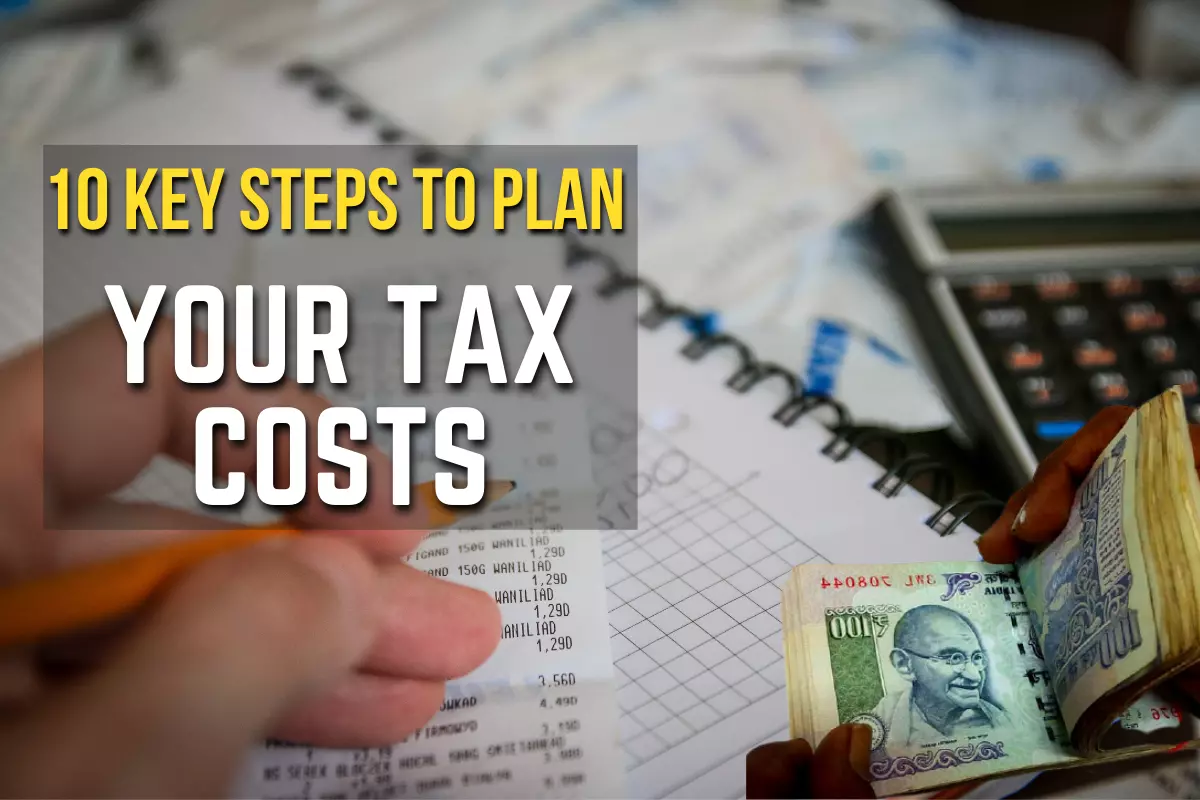10 key steps to plan your taxes and reduce your tax costs
10 key steps to plan your taxes : The sooner you plan your taxes, the more you’ll save! Every salaried person is subject to payment of taxes on income and earnings from other sources. Taxes take a significant portion of your hard earned money. But tax exemptions are available for citizens to avail while filing Income Tax Return (ITR). However, in the hustle and bustle of daily life, it is no secret that many taxpayers end up in a last-minute rush to avail these tax benefits, which can lead to the possibility of errors. Therefore, it is necessary to have a systematic plan to save more in taxes.

Tax planning is one of the most important measures for financial planning as the main aim is to reduce the tax liability to the highest and highest level to save your hard earned money and at the same time meet the obligations and requirements. Timing is one of the most important factors when doing tax planning! With 2023 in full swing, let’s understand how to plan your taxes and why it’s important to start early!
For the financial year 2022-23 (the assessment year 2023-24), the last date for filing ITR is July 31, 2023. Taxes can eat up a lot of your hard-earned money if not planned properly, explains Abhishek Soni, co-founder and CEO of Tax2win, a fisdom company. Unfortunately, this saying is very accurate in situations where we wait until the last minute to start the tax planning process, even though we know that payment of taxes is mandatory.
Tax2win CEO added that tax planning is essential for all investor financial planning. A tax planning practice can help you reduce your tax liability and save your hard-earned money. The ultimate goal of tax planning is to commit to tax efficiency.
Here are 10 key steps to plan your taxes and reduce your tax costs:
- Start paying early: Last-minute tax payment planning can lead to costly investment mistakes. Advance tax planning is always beneficial when your tax investments and expenses begin.
- Choose a tax preparer – If this is your first time filing an ITR, make sure that the tax preparer you choose is educated enough to handle your tax files. If you already have a CPA, meet with them in person at least a few weeks before the end of the tax year so they can suggest other ways to lower your taxes. Many tax companies allow you to file your taxes yourself by following certain steps and providing relevant information. These fintech companies can help you with their experts or CA who can guide you from step 1 to more.
- Collect all documents: Documents required for filing ITR should be collected in advance like pay stubs, Form-16, Form-16A / Form-16B / Form-16C, Form-26AS, interest income documents and other certificates of interest, and mortgage loans. Statements, investment stock details, proof of deductions, and investments claimable under section 80C, 80D, 80E, 80TTA, etc. and others.
- Choosing the right tax saving option for you: This approach is beneficial as it helps you achieve your financial goals on time. There are several tax-saving options under Chapter VIA of the Income Tax Act, 1961, and beyond. Choose the one that suits your needs based on your investment strategy and risk appetite. Additionally, many tax planning optimization tools are available on tax filing sites that can help you choose the right tax-saving option.
- Calculate Total Gross Income – In this step, you need to list the total income earned during the financial year from various sources like salary, other sources (various types of dividend income or interest income are included here), and capital gains. Property, business or profession, etc.
- Net Taxable Income (NTI): Under NTI, all the deductions under Chapter VIA that you are entitled to under the Income Tax Act are counted. This step will help you reduce your taxable income. Deductions 80C, 80D, 80DDB, etc. This will be deducted from your gross income to calculate Net Taxable Income(NTI).
- Calculate your tax liability: If you have earned income or acquired assets from anywhere, you have tax liability. You can reduce this liability by claiming deductions and exemptions, . Calculating tax liability can be complicated for you, so many tax filing companies guide you step by step online with their experts and CA or do it yourself. These companies have also introduced income tax calculators where you can quickly understand your tax liability.
- List any major expenses or investments you have made: list out carefully any major expenses you spent or investments you made for the year and quarter. So that it will help you to calculate your tax valuation.
- Stay updated on any changes in tax laws: It is very important to stay updated on new tax laws. You can not avoid new rules from the tax authorities.
- Keep a copy of your return file of the previous year ready: Before paying your current tax file or making returns, it is very important to have a copy of your last year tax return file with you.
Read Also: The Basic Facts Which You Need to Know About Stock Market and Angel Broking

7 thoughts on “10 key steps to plan your taxes and reduce your tax costs”